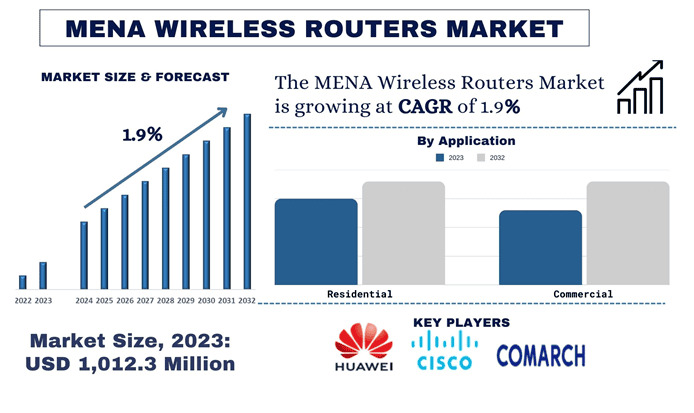
In today’s competitive business environment, human capital is widely recognised as a primary source of sustainable competitive advantage. Talent management, which encompasses attracting, developing, retaining, and optimising employees, is critical for organisations seeking to outperform rivals. Effective talent management strategies ensure that organisations have the right people with the right skills in the right roles, fully engaged and motivated to contribute to strategic objectives.
The concept of competitive advantage, as introduced by Michael Porter (1985), emphasises unique capabilities that enable an organisation to outperform competitors. Talent management contributes to this by developing a workforce that is not easily replicated, fostering innovation, productivity, and organisational agility.
This best 5RST Assignment Help explores the importance of talent management strategies, key components, implementation methods, measurement of effectiveness, challenges, and best practices to achieve competitive advantage in dynamic business environments.
1. Understanding Talent Management and Competitive Advantage
Talent management is a strategic approach to human resource management that focuses on identifying, attracting, developing, and retaining key employees who drive organisational success. It goes beyond traditional HR functions, integrating workforce planning, leadership development, succession planning, and employee engagement.
Competitive advantage arises when organisations deploy resources human, technological, or financial in ways that are valuable, rare, inimitable, and non-substitutable. A talented workforce embodies these qualities, as high performing employees possess skills, knowledge, and behaviours that are difficult for competitors to replicate.
Organisations that prioritise talent management align HR practices with business strategy, creating a cohesive approach that ensures workforce capabilities support organisational goals. For example, a technology firm investing in innovative training programs can develop unique expertise, differentiating itself from competitors and gaining a competitive edge.
2. Key Components of Talent Management Strategies
Effective talent management strategies encompass several interconnected components:
a) Workforce Planning:
Identifying current and future talent needs ensures that organisations have the right number of employees with the right skills. Workforce planning helps anticipate skill gaps and reduce talent shortages that could hinder performance.
b) Talent Acquisition and Recruitment:
Recruitment strategies focus on attracting high potential candidates aligned with organisational culture and strategic objectives. Employer branding, social media recruitment, and competency-based selection are critical tools.
c) Learning and Development (L&D):
Training, mentoring, and continuous development initiatives enhance employee skills, performance, and innovation capabilities. Leadership development programs prepare future leaders, ensuring long-term organisational stability.
d) Performance Management:
Setting clear objectives, providing feedback, and linking performance to rewards ensures employees contribute to strategic goals. High performing employees are recognised and retained, while underperformers are supported or managed appropriately.
e) Employee Engagement and Retention:
Engaged employees are motivated and committed to organisational success. Retention strategies, including career progression, recognition programs, and work life balance initiatives, reduce turnover and preserve institutional knowledge.
f) Succession Planning:
Identifying and developing high potential employees ensures continuity in critical roles, minimising disruption and maintaining competitive advantage over time.
3. Implementing Talent Management Strategies
Effective implementation of talent management strategies requires a structured, strategic approach:
Step 1: Align Talent Management with Organisational Strategy
HR leaders must understand business goals and ensure talent strategies support them. For instance, if innovation is a priority, strategies should focus on hiring creative thinkers and investing in learning programs that encourage ideation.
Step 2: Identify Key Talent and Critical Roles
Not all roles are equally strategic. Identifying high impact positions and high-potential employees enables targeted talent management interventions.
Step 3: Develop Integrated HR Processes
Integrating recruitment, onboarding, training, performance management, and succession planning ensures consistency and maximises impact.
Step 4: Use Technology and Analytics
HR analytics and talent management software allow organisations to track employee performance, identify skill gaps, and make data-driven decisions. Predictive analytics can forecast turnover risks or identify potential leaders.
Step 5: Communicate and Engage Employees
Employees must understand the organisation’s vision, their roles, and how they can grow. Transparent communication, feedback, and recognition foster engagement and loyalty.
By following these steps, organisations create a robust talent management framework that enhances workforce capability and drives competitive advantage.
4. Talent Management and Organisational Performance
Talent management directly impacts organisational performance across multiple dimensions:
a) Innovation and Creativity:
Employees with the right skills, training, and empowerment contribute innovative ideas and solutions. Organisations with strong talent pipelines can adapt to changing markets and technological advancements.
b) Productivity and Efficiency:
Effective talent management ensures employees are competent, motivated, and deployed strategically, enhancing operational efficiency. Performance management systems linked to clear objectives maximise output.
c) Employee Retention and Knowledge Management:
Retention of high potential employees preserves organisational knowledge and reduces recruitment costs. A stable workforce contributes to consistent performance and long term strategic execution.
d) Leadership Development:
Succession planning and leadership programs cultivate a pool of capable leaders, ensuring continuity in critical roles and reducing organisational risk.
e) Competitive Differentiation:
Talented employees are a unique, inimitable resource. Organisations with superior talent management strategies achieve outcomes that competitors cannot easily replicate, sustaining competitive advantage.
In sum, effective talent management translates into measurable improvements in productivity, innovation, engagement, and financial performance, establishing a clear link between workforce capability and business success.
5. Measuring the Effectiveness of Talent Management
To ensure that talent management strategies achieve competitive advantage, organisations must measure their effectiveness. Key metrics include:
Employee Performance Metrics: Track output, goal attainment, and contribution to strategic initiatives.
Retention Rates and Turnover: High retention of key talent indicates successful management and engagement strategies.
Training ROI: Measures improvement in skills, productivity, and business impact from L&D initiatives.
Succession Readiness: Assesses the availability of qualified internal candidates for critical roles.
Employee Engagement Scores: Reflect motivation, satisfaction, and alignment with organisational objectives.
Regular analysis of these metrics enables HR leaders to refine strategies, address skill gaps, and ensure alignment with organisational goals, maintaining a sustainable competitive edge.
6. Challenges in Talent Management
Despite its strategic importance, talent management faces several challenges:
Talent Shortages: High demand for skilled professionals can create recruitment difficulties.
Globalisation and Cultural Diversity: Managing a diverse workforce across locations requires adaptable strategies.
Rapid Technological Change: Continuous skill upgrading is needed to keep pace with evolving industry requirements.
Employee Expectations: Millennials and Gen Z employees prioritise flexibility, development, and purpose, requiring updated engagement strategies.
Retention of High Potential Employees: Competitors often target top talent, creating retention pressures.
Overcoming these challenges requires proactive planning, investment in learning and development, technology adoption, and employee centric policies that foster loyalty and engagement.
7. Best Practices for Talent Management Strategies
To maximise the impact of talent management, organisations should adopt best practices:
Align Talent Strategy with Business Goals: Ensure workforce development supports organisational objectives.
Identify and Focus on Key Talent: Prioritise high-potential employees and critical roles.
Integrate HR Processes: Connect recruitment, training, performance, and succession planning into a cohesive system.
Leverage Technology: Use analytics and talent management platforms to monitor performance and predict trends.
Foster a Culture of Learning and Innovation: Encourage continuous development and knowledge sharing.
Engage and Recognise Employees: Provide feedback, rewards, and career progression opportunities to retain talent.
Review and Adapt Strategies Regularly: Respond to changing business environments, technology, and employee expectations.
Following these practices ensures a sustainable, strategic approach to talent management that strengthens competitive advantage.
Conclusion
Talent management strategies are essential for organisations seeking to achieve and sustain competitive advantage. By attracting, developing, retaining, and optimising key talent, organisations ensure that human capital contributes directly to strategic goals. Effective talent management enhances innovation, productivity, employee engagement, and leadership readiness, creating a workforce capable of delivering superior performance in dynamic markets.
Implementation requires alignment with business strategy, identification of critical roles, integrated HR processes, technology adoption, and continuous measurement. Challenges such as talent shortages, global diversity, and changing employee expectations must be addressed through proactive, employee centric approaches.
Organisations that adopt best practices in talent management integrating learning, performance, engagement, and succession planning build a resilient, adaptable workforce. This unique capability differentiates them from competitors and provides a sustainable competitive edge. Ultimately, talent management is not just an HR function; it is a strategic driver of organisational success and long-term growth.


